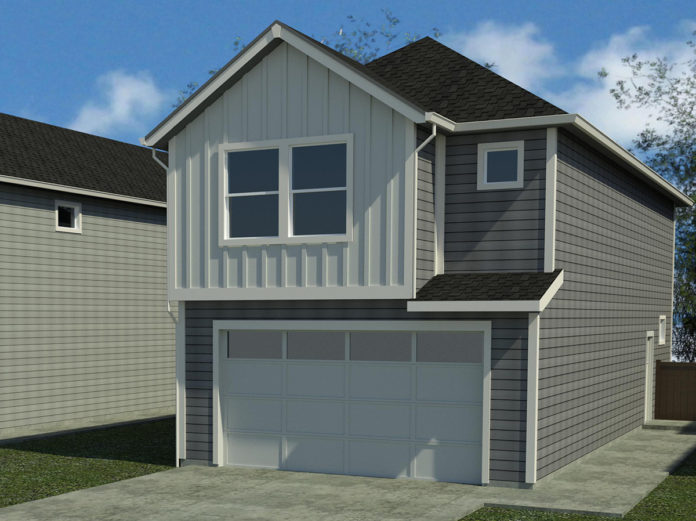
Recent news reports, letters to the editors and social media comments continue to promote a false narrative about home building, its effects on our community and its fiscal impact on our local and state economy.
Although the narrative being loudly pronounced by a few claims that development and growth doesn’t pay for itself, a report recently released by the Building Industry Association of Washington (BIAW) contradicts that assertion. Not only does it show the immediate economic impact of development, it also refutes the belief that “residential development creates a short-term gain at the expense of long-term pain.”
At the highest level, the report shows the total economic impact of the construction of 24,000 single-family homes built in Washington state in 2018 was $8.4 billion. In addition, the industry was also responsible for $2.2 billion in state and local government revenue and 103,315 jobs. If you applied this statewide average to the 1,777 homes built in Clark County in 2018 you would see an economic impact of $621,950,000 with $162,891,667 going to state and local government and supporting 7,650 jobs. We know however that Clark County is above average in land and construction costs as well as impact fees, taxes and other costs; the actual numbers are presumably higher.
After the homes are built and occupied, positive residual effects can still be realized for years to come. At the state level, annually this accounts for $1.2 billion in overall revenue, $435,700,000 in government revenue and 18,251 jobs. More importantly, based on these numbers the industry is responsible for a minimum of $88,850,000 in general revenue, $32,259,954 to support government and infrastructure and 1,351 jobs in Clark County.
The report, commissioned by BIAW, examined both direct and indirect impacts of construction activity over one year, including the impact of Washington residents who earn money from the construction activity and the money from the construction activity spent within the state. Additionally, the report reviewed the ongoing, annual local impact that resulted from the new homes being occupied, the occupants paying taxes and otherwise participating in the state economy year after year.
The report also highlights an important statistic when having an honest discussion about the economic support the development industry provides directly to government. Statewide, the industry, and ultimately homeowners, pays $1,445,506,900 in user fees and charges. It must also be noted that $840,000,000 of that is due to residential permit and impact fees.
Whenever housing affordability is discussed, land, labor and materials cost as well as developer profit are always touted as the cause of the crisis, while we ignore government take at almost $1.5 billion statewide annually.
Whenever solutions are offered, they tend towards subsidies, rent control, inclusionary zoning, new targeted taxes (short for taxes paid by “the other guy”) and other ideas. However, we are not having an honest discussion if the people proposing those solutions ignore the fact that one of the largest controllable costs of housing is attributable to the jurisdictions tasked with fixing it.
Housing affordability cannot be addressed by making the commodity cost more.
Supply and demand, as an economic concept, isn’t more obvious than in the housing market. Scarcity drives cost and we are currently experiencing that with the rapidly increasing cost of housing in Clark County. The only way to address is to build more supply to equalize the demand, but it must be done at prices affordable for our citizens. Disappointingly, it is not, due to many of the reasons already stated.
The median price of new and used housing stock in Clark County is $390,000, which requires an annual household income of $105,000 for an affordable mortgage payment. That assumes, of course, you have a minimum of $10,000 for a down payment. Unfortunately, with a median household income in Clark County of only $75,000, 77% of our residents can’t afford to buy a home. For every $1,000 in additional cost, whether it is impact fees, material or labor costs, another 776 families are priced out of owning a home.
To get the conversation started, let’s review some of the highlights of the report.
The report found that new home construction has the following economic impacts:
- Construction Phase (direct & indirect impact)
- $8.4 billion in family wages
- $2.2 billion in state & local taxes
- 103,315 jobs created
- Ripple Phase (spending of income and taxes from construction phase)
- $3.2 billion in family wages
- $774 million in state and local taxes
- 46,381 jobs created
- Occupancy Phase (ongoing, annual)
- $1.2 billion in family wages
- $436 million in state and local taxes
- 18,251 jobs created
I kindly ask you to review the full study at http://biaofclarkcounty.org/wp-content/uploads/2019/07/nahb_economic_impact_study_2019-1.pdf so we can continue to have a productive and factual conversation about home building, population growth and economics in Washington and Clark County.
Avaly Scarpelli is the executive director of the Building Industry Association of Clark County. She can be reached at avaly@biaofclarkcounty.org.






